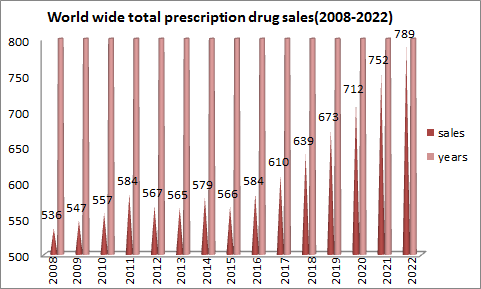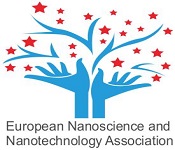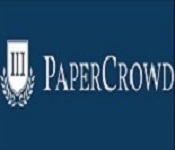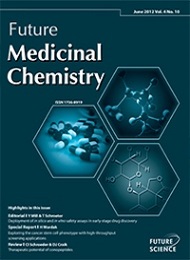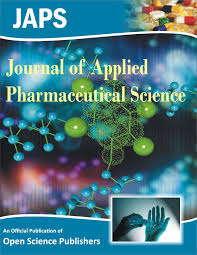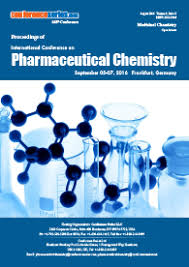Theme: Updates and Challenges towards Development of Novel Therapeutic Strategies Against COVID-19
Euro Pharma Chemistry 2020
Euro pharma Chemistry 2020 is designed to update specialists, research’s and scholars, experts and research follower’s, are practicing in Pharmaceutical chemistry about new approaches to the diagnosis and management of Pharmaceutical Technologies. Speakers will present data on multiple topics including general Analytical Chemistry, Drug Delivery Chemistry, Pharmacology, Phyto-pharmaceuticals, Pharmaceuticals and Cosmetics, Nano-medicine and Nano-technologies, Computer aided drug delivery system, and Natural products chemistry.
Pharmaceutical Chemistry Conferences is considered as one of the major conferences provides best platform for attendees to acknowledge, learn recent trends and advancements in field of Pharmaceutical Chemistry. Pharmaceutical Chemistry conferences showcase the discussion topics confronting the functioning of Advanced organic synthetic techniques, Analytical method development, Screening of drug candidates and lead molecules, Metabolic stability studies, Molecular modelling based drug design system.
Target Audience:
- Pharmaceutical companies
- Researchers and Scholars
- Academicians
- Professors
- Delegates
- Specialists
- Experts and research fellows
- Business entrepreneurs
- Companies manufacturing medical devices
- Research and Medical Laboratories
Track 1: Pharmaceutical Chemistry:
Pharmaceutical science is the study of drug compounds, and it includes the drug development process. This includes drug discovery, delivery, absorption, metabolism, distribution, and excretion. There are components of biomedical investigation, pharmacology, pharmacokinetics, and pharmacodynamics. The Pharmaceutical science’s prompts professions in drug development, pharmaceutical enterprises, and research facilities. Pharmaceutical scientific experts are associated with the advancement and evaluation of therapeutic compounds. The field of pharmaceutical chemistry is in unique and it involves vast areas of expertise. Learn more about the Novel aspects of pharmaceutical chemistry at Pharmaceutical chemistry conference Through Online Event,
- Advanced organic synthesis techniques
- Analytical method development
- Screening of drug candidates and lead molecules
- Metabolic stability studies
- Molecular modelling based drug design system
Track 2: Recent Trends in Pharmaceutical Research:
Bio-Pharma Trends are being ever-increasing pressure to compete in challenging economic and the technological environment; pharmaceutical and biotech companies must continuously in-novate their R&D programmes to stay ahead of the game. Several important trends affecting biopharmaceutical industry namely as:
- Adoption of Artificial Intelligence (AI) by pharma and biotech: AI-based tools is now explored at all stages of drug discovery and development -- from research data mining and assisting in target identification and validation, to helping come up with novel lead compound’s and drug candidates, and predicting their properties and risks.
- Expanding chemical space for drug discovery explorations: Exploration is the access to an expanded and chemically diverse space of drug like molecules to choose candidates from, especially, for probing novel target biology. Given that existing compound collections at the hands of pharma were built in part based on the small molecule designs targeting known biological targets, new biological targets require new design’s and new ideas, instead of recycling excessively the same chemistry.
- Targeting RNA with small molecules: This is a hot trend in drug discovery space with a continuously growing excitement: academics, biotech startups and pharmaceutical companies are increasingly active about RNA targeting, although uncertainty is also high.
- New antibiotics discovery: There is a growing concern about the rise of antibiotic-resistant bacteria — superbugs. They are responsible for about 7,00,000 deaths worldwide each year, and according to a U.K. government review this number can dramatically increase -- up to 10 million by 2050. Bacteria evolve and develop resistance to the antibiotics which were traditionally used with great succes’s, and then become useless with time.
- Phenotypic screening: In 2017 authors David Swinney and Jason Anthony published results of their findings about how new medicines had been discovered between 1999 and 2008 unveiling the fact that considerably more of the first-in-class small molecule drugs had actually been discovered using phenotypic screening than target-based approaches and it is even more striking taking into account that it was target based approach that had been a major focu’s over the period stated.
- Organs (body)-on-a-chip: Microchips lined by living human cells could revolutionize drug development, disease modeling and personalized medicine. These microchips, called ‘organs-on-chips’, offer a potential alternative to traditional animal testing. Ultimately, connecting the system’s altogether is a way to have the whole “body-on-a-chip” system ideal for drug discovery and drug candidate testing and validation.
- Bioprinting: Bioprints parts of the body -- noses and ears, mainly for testing drugs and cosmetics. It also print’s cubes enabling researchers to “play” with cells from human organs such as livers.
Track 3: Medicinal Chemistry:
Medicinal chemistry is an academic journal deals with the facts of Chemistry pharmacoanalysis and the chemical analysis of compounds in the form of like small organic molecules such as insulin glargine, erythropoietin, and others. It also helps in developing new chemical entities from the existing compounds that are of medicinal and therapeutic effect. Here the process involves seclusion and identification of the entities and their probable effect on the specific target and might include a computational or synthetic observation of the underlying agents. Medicinal chemistry mainly focused on areas such as
- Medicinal Organic Chemistry
- Synthetic Medicinal chemistry
- Anticancer Agents in Medicinal chemistry
- Medicinal Biochemistry
- Medicinal Chemical Research
- Medicinal Companies and Market Analysis
- Applied Medicinal chemistry
- Bioorganic Chemistry
- Anti-Infective Agents in Medicinal chemistry
Track 4: Pharmaceutical Bio-chemistry:
Pharmaceutical biochemistry consist’s the data of biochemistry & chemistry & applies to the production of the many helpful medicine. It principally issues with the science of medicine, and their clinical uses and therefore the study of their adverse effects on living organisms. It provides a whole understanding of chemical processes occurring and related to the living cells at molecular level that's associated with drug action. It was conjointly helps to acquire the data on the adverse effects, molecular targets, & characterization of medicine or different chemical substance within the living cells & organisms.
- Protein structure and dynamics
- Forensic Biochemistry
- Histopathology
Track 5: Medicinal Bio-chemistry:
Medical biochemistry is a field that studies different types of molecules in hopes of bettering technology and medicine. In order to work in the medical biochemistry environment, students typically need to get an advanced degree, such as a master's and doctorate.
- Potential use of stem cells for regeneration
- Harnessing yeast organelles for metabolic engineering
- Si-RNA a tool in chemical biology
- Proteomics
- Discovery of biomolecules through meta-genomics
Track 6: Diagnostic Pharmaceutical Chemistry:
Diagnostic agents are the substances used to examine the body in order to detect the impairment of its normal functions. Usually these agents find no other use in medicine.
Diagnostic specialties:
- Cellular pathology,
- Clinical chemistry,
- Hematology,
- Clinical microbiology
Track 7: Drug formulation/Pharmaceutical formulation:
Drug Formulation is the process where different chemical substances including the products which are combined to produce a medicinal product. There are numerous anatomical routes which are thought them as medical drugs that can be administered directly into the human body. The selection process of the route depends upon three factors which are: the effect desired type of disease & finally the type of product.
- Design, manufacture and use of efficacious dosage forms
- Types of Formulation: Enteral, Parenteral and Topical
- Water-miscible formulations
- Other formulations: Pesticide formulation
Track 8: Pharmaceutical Chemistry Novel Aspects:
The Pharmaceutical chemistry is a sub-division at intersection of chemistry, especially synthetic organic chemistry, and pharmacology and various biological specialties, where they are involved with drug design, chemical synthesis and development for a market/ bio-active molecules (drugs). It involves chemical aspects of identification, and later systematic, thorough synthetic alteration of new chemical entities to make them appropriate for therapeutic use. In Pharmaceutical chemistry the most common guide was focusing on small organic molecule’s encompasses synthetic organic chemistry and aspects of natural products chemistry and computational chemistry together targeting at drug discovery and the development of new different therapeutic agents.
- Chemical biology
- Enzymology
- Structural biology
Track 9: Green Chemistry in pharmaceutical Industry:
The preventing environment pollution is an essential issue in the current world than cleaning up the atmosphere. By tradition, chemists have the designed product that is effective and economical. They need to think about the waste generated throughout the process of the new chemicals and product and its toxicity. Inventing any novel product that is of concern to North American country or ecosystems ultimately goes into the environment at the top of the lifetime.
- The Metrics of Green Chemistry
- Green Chemistry and Sustainability
- Designing Sustainable Solutions
- Principles Applied in Green Chemistry
- Green Chemistry Focuses on Inherent Hazards
- Green Chemistry Tackles the Grand Challenges
- Adverse Effects of Chemicals on Health and the Environment
- Green Chemistry Problems
Track 10: Analytical Chemistry:
Analytical chemistry is that the investigation of the partition, identification, internal control and quality of affirmation of the artificial components of characteristic and made materials. The support of a sought after level useful in Associate in Nursing extremely administration or item, particularly by implies that of thought concerning every part of the technique for conveyance or creation.
- Clinical analytical chemistry
- Environmental analytical chemistry
- Quality control
- Forensic analytical chemistry
Track 11: Drug Delivery Chemistry:
It was refers to the approaches, formulations, technologies, and systems for transporting a pharmaceutical compounds in the body as needed to safely achieve their desired therapeutic effect. The Drug delivery technologies will modify the drug release profile, absorption, distribution, metabolism and elimination, for the benefit of improving product efficacy and safety. Drug release from: diffusion, degradation, swelling, and affinity-based mechanisms.
Routes of administration:
- Enteral (gastrointestinal tract)
- Parenteral (via injections)
- Inhalation
- Transdermal
Track 12: Integrated Pharmaceutical Chemistry in Drug Discovery and Development:
The drug is designed and manufactured with the correct ratio of the components is only to achieve the desired target of delivering it to the corresponding patients with the fewer side effects, which is taken care by the pharmaceutical industries by developing their drug discovery protocols. The innovative ideas on the streams like immunogenicity, bio recognition, pharmacokinetics, non-specified toxicity, pharmacodynamics and efficacy of drugs is also being generated.
- Lead identification and optimization
- Chemical biology approach to drug discovery
- Plant derived drugs in drug discovery
- Computer aided drug models in drug discovery
- Drug transporters in drug discovery
Track 13: Radio-Pharmaceutics:
Radio pharmaceuticals are one of a kind restorative plans containing radioisotopes which are utilized as a part of major clinical regions for finding and additionally treatment. The offices and systems for the generation, utilize, and capacity of radio pharmaceuticals are liable to authorizing by national or potentially local specialists. Extra controls may apply for issues, for example, transportation or administering of radio pharmaceuticals.
- Radioactivity
- Radio-pharmacology
- Medical Isotopes
- Nuclear medicine
- Imaging and Non- Imaging
Track 14: Pharmacology:
Pharmacology is moving forward in the research field due to the innovations in the vast field like biomedical science, encompassing clinical pharmacology, that is concerned with the effects of drugs/pharmaceuticals and other xenobiotic’s on living systems, as well as their development and chemical properties. In precise, pharmacology also helps in exchange of information regarding health sciences.
- Rational Dosing & the Time
- Neuropharmacology
- Clinical Pharmacology
- Drug Biotransformation
- Drug Receptors
- Pharmacy Practice Research
- Pharmacotherapy
- Pharmacotherapy
Track 15: Phyto-pharmaceuticals:
Phytochemistry is the investigation of phytochemicals, which are chemicals gotten from plants. Those are considering under phytochemistry endeavor to portray the structures of the vast number of auxiliary metabolic mixes found in plants, the elements of these mixes in human and plant science, and the biosynthesis of these mixes. Phyto-chemistry can be considered as sub-fields of botany or chemistry. Activities can be led in botanical gardens or in the wild with the aid of ethno-botany. Applications of the discipline can be called as pharmacognosy, or the discovery of new drugs, or as an aid for plant physiology studies.
- Polyphenols
- Phytosterols
- Alkaloids
- Saponins
Track 16: Pharmaceuticals and Cosmetics:
An emerging field in the industry is Cosma-ceuticals relates pharmaceutical drugs and traditional cosmetic products and knowing the advances in the field and knowledge of Skin Biology and Pharmacology facilitated the development of Pharma in cosmetics. The sources in pharmaceuticals are starches and they make a variety of contributions. This includes from binder to sweeteners (sugarless) thereby resulting in products as disparate as toothpaste, tablets, emulsions, lotions, liquid medicines and creams. Starch is also used in quite extensively in healthcare products, cosmetic and make up.
- Inject-able Cosmetic treatments
- Acne therapy
- Craniofacial treatment
- Industrial Pharmacy and Cosmetics Science
- Facial Cosmetics and role of Pharmacist
Track 17: Nano-medicine and Nano-technology:
Nano-medicine is the interdisciplinary field of science, restorative use of a Nanotechnology, which incorporates diagnosing, treating and forestalling malady and horrible damage, mitigating torment and saving and enhancing human wellbeing utilizing atomic instruments and sub-atomic learning of the human body. It manages the structure running from 1nm to 100nm. It has an extensive variety of use in medicinal fields like medication conveyance, Cancer treatment, Imaging, Sensing, Blood refinement, Tissue designing, and Medical gadgets.
- Advanced Nanomaterial
- Nanotechnology applications
- Nano-materials safety and regulations
- Nano-materials Characterization and Synthesis
- Nano-devices and Systems
- Biomedical Nanomaterial
Track 18: Bio-pharmaceutics and Biologics:
Biologics are genetically engineered protein’s and these are derived from human genes. These are designed to inhibit the particular components of the immune system that plays a pivotal role in fuelling inflammation, which is a central feature of rheumatoid arthritis. The pathophysiologic rationale for, and clinical application of, Biologic agents in the management of autoimmune diseases, cancers, or other pathologies where a molecular target can be identified.
- Nano-biopharmaceuitics
- Medical devices
- Biologics: sugars, proteins, nucleic acids
- Allergenic and somatic cells
- Large–scale production transgenic
- Recombinant therapeutic protein, and living cells used in cell therapy
Track 19: Computer/Computational Aided Drug Designing/Discovery:
Computer aided drug design (CADD) centre works with collaboration between structure biologists, biophysicists and computational scientists for discovery of the new chemical entities. Computer-Aided Drug Discovery and Development (CADDD) will be utilized in this diagram of the territory to cover the whole procedure. Both computational and experimental techniques in chemistry have essential parts in drug discovery and drug development and speak to reciprocal methodologies.
- Brief History of CADD
- CADD Strategies in the Drug Discovery Process
- Serendipity in Drug Research
- Graph Machines
- Drug Discovery Process
Track 20: Green Chemistry in pharmaceutical Industry:
Preventing environment pollution is an essential issue in the current world than cleaning up the atmosphere. By tradition, chemists have the designed product that is effective and economical. They need to think about the waste generated throughout the process of the new chemicals and product and its toxicity. Inventing any novel product that is of concern to North American country or ecosystems ultimately goes into the environment at the top of the lifetime.
- The Metrics of Green Chemistry
- Green Chemistry and Sustainability
- Designing Sustainable Solutions
- Principles Applied in Green Chemistry
- Green Chemistry Focuses on Inherent Hazards
Track 21: Natural Products Chemistry:
Pharmaceutical chemistry involves in curing and providing remedie’s for disease, analytical techniques, pharmacology, metabolism, quality assurance, and drug chemistry. There are elements of biomedical analysis, pharmacology, pharmacokinetics, and pharmacodynamics. Pharmaceutical chemistry work is usually done in lab setting. In development of the pharmaceutical agents, synthetic organic chemistry and chemical synthesis are involved to give the desired bio active molecule. Learn more about the perspectives of Medicinal Chemistry at Pharmaceutical Chemistry conference.
- Application of Medicinal Chemistry to Pharmacology
- Primary metabolites
- Secondary metabolites
- Biosynthesis
- Modern Natural Product Derived Drugs
- Biosynthetic Mechanisms
- Prostaglandins and Steroids
- Alkaloids and Terpenes
- Isolation and Structural elucidation of Natural Products
Track 22: Research Work in Pharmaceutical Technologies:
Research and Development can be defined as innovative and experimental work undertaken on a systematic basis to increase the stock of knowledge including search of new molecules, synthesis and modification of known molecules and also some methods to increase production rate by adopting diverse techniques. Superior quality R&D work requires an excellent back up from what are called the support functions. These include analytical, information services and technology, intellectual property and regulatory affairs. The management of these functions, especially the laboratory based analytical service, requires many of the skills associated with core R&D and will therefore not be treated separately in any detail, except to point out their relationship and role within the organization.
- Challenges in Pharmaceutical Formulations
- Scope of Pharmaceutical Research
- Pharmaceutical Packaging and labelling
- Pharmaceutical industry
- Bioinformatics and Computational Biology
- Pharmaceutical Technology Assessment
- Opportunities in Pharmaceutical Management
Pharmaceutical Chemistry 2020 is an open platform to explore and gain the knowledge in the field of Pharma and Chemistry. This conference brings together professors, researchers, scientists, students in all the areas of medical sciences, Pharmaceutical, Life sciences, Medical associations and societies, enables an international forum to explore the approved research. Conference Series Ltd is delight to invite you all to attend and register for the “International Conference on Pharmaceutical Chemistry (Pharmaceutical Chemistry 2020)” scheduled for the Online Event.
Global market in pharmaceutical chemistry:
Pharmaceuticals are one of the world's most profitable industries. During the last 30 years, the industry has spent billions of dollars on research and reaped billions in return. In Recent research projects that Global growth rate for the pharma industry of 6.3% CAGR through 2022, up from the 5% CAGR it predicted last year for the 2014-2020 period, which is evaluated. The overall $1.12 trillion market in 2022, says Evaluate, will rise at a faster clip during 2016-2020, then slow down a bit as major patent expirations take hold. Evaluate says that the global market actually declined by 1.0% in 2015, but will grow by 4.8% in 2016. Prescription sales excluding generics will rise 4.4% this year, and will reach $1.006 trillion in 2022. During the 2008-2015 period, the compound annual growth rate of global R&D spending was 1.7%; during the 2016-2022 period, the rate will grow at 2.8%. The year-over-year increase, however, will remain around 3%, versus some dramatic jumps seen in 2013, 2014 and 2015. Overall spending will reach $182 billion in 2022.Research firm says that worldwide drug sales increases year by year. The below figure represents the world wide prescription drug sales.
|
https://d2cax41o7ahm5l.cloudfront.net/cs/upload-images/pharmaceuticalchemistry-2020-78663.png |
Total Worldwide Drug Sales (2008-2022)
Pharma-chemistry market in European countries:
The Pharmaceutical Market in EU has a value of over 183 Million €, positioning Europe as the second biggest pharmaceutical market in the world, with Germany, France, Italy, United Kingdom and Spain as top 5 countries. The largest market is Germany with around 48 Million € which accounts for 24% of the market.
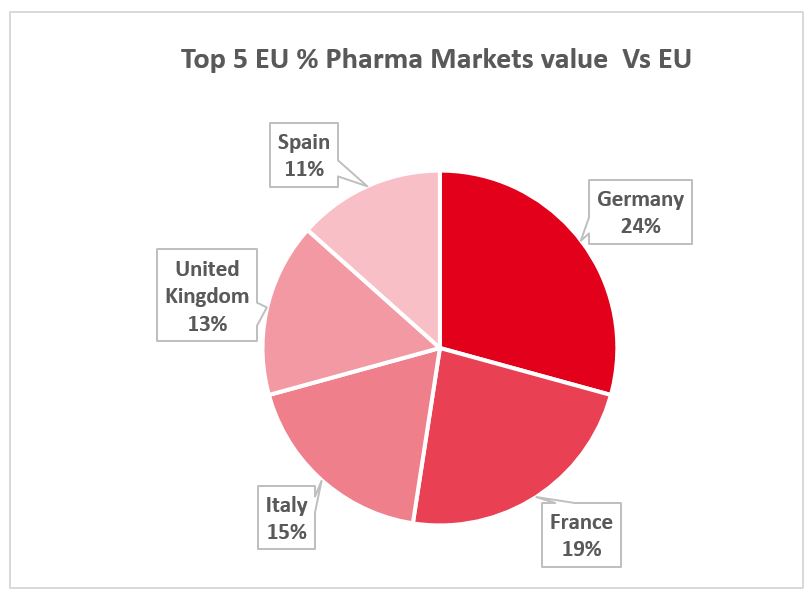
Pharmaceutical Market Vs European countries
Europe accounts for 22% of world pharmaceutical sales and during the period 2012-2017 and 18% of sales of new drugs were on the European market. The total volume of medicinal products consumed globally is set to grow about 3% annually through 2021 and estimations point to a compound annual growth rate of 4 percent by 2022.

Medicinal products are advancing at an astonishing rate, however there are challenges. The regulation of drugs involves rigorous standards and complex regulatory environment. Prices and distribution margins are generally fixed by governments, and Vat rates differ significantly from country to country in Europe.
Despite these circumstances, European pharma market maintains and forecasts an extensive growth pattern and Europe is becoming increasingly attractive to investors. Probably, for companies of pharma-merging markets is the best time to explore opportunities and business in the European market.
Conference Highlights
- Pharmaceutical Chemistry
- Medicinal Chemistry
- Pharmaceutical Bio-chemistry
- Medicinal Bio-chemistry
- Diagnostic Pharmaceutical Chemistry
- Drug formulation/Pharmaceutical formulation
- Pharmaceutical Chemistry Novel Aspects
- Green Chemistry in pharmaceutical Industry
- Analytical Chemistry
- Drug Delivery Chemistry
- Integrated Pharmaceutical Chemistry in Drug Discovery and Development
- Radio-Pharmaceutics
- Pharmacology
- Phyto-pharmaceuticals
- Pharmaceuticals and Cosmetics
- Nano-medicine and Nano-technology
- Bio-pharmaceutics and Biologics
- Computer/Computational Aided Drug Designing/Discovery
- Recent Trends in Pharmaceutical Research
- Natural Products Chemistry
- Research Work in Pharmaceutical Technologies
- Applications and Future Trends of Green Chemistry
To share your views and research, please click here to register for the Conference.
To Collaborate Scientific Professionals around the World
| Conference Date | April 27-28, 2020 | ||
| Sponsors & Exhibitors |
|
||
| Speaker Opportunity Closed | Day 1 | ||
| Poster Opportunity Closed | Click Here to View | ||
Useful Links
Special Issues
All accepted abstracts will be published in respective Our International Journals.
Abstracts will be provided with Digital Object Identifier by






